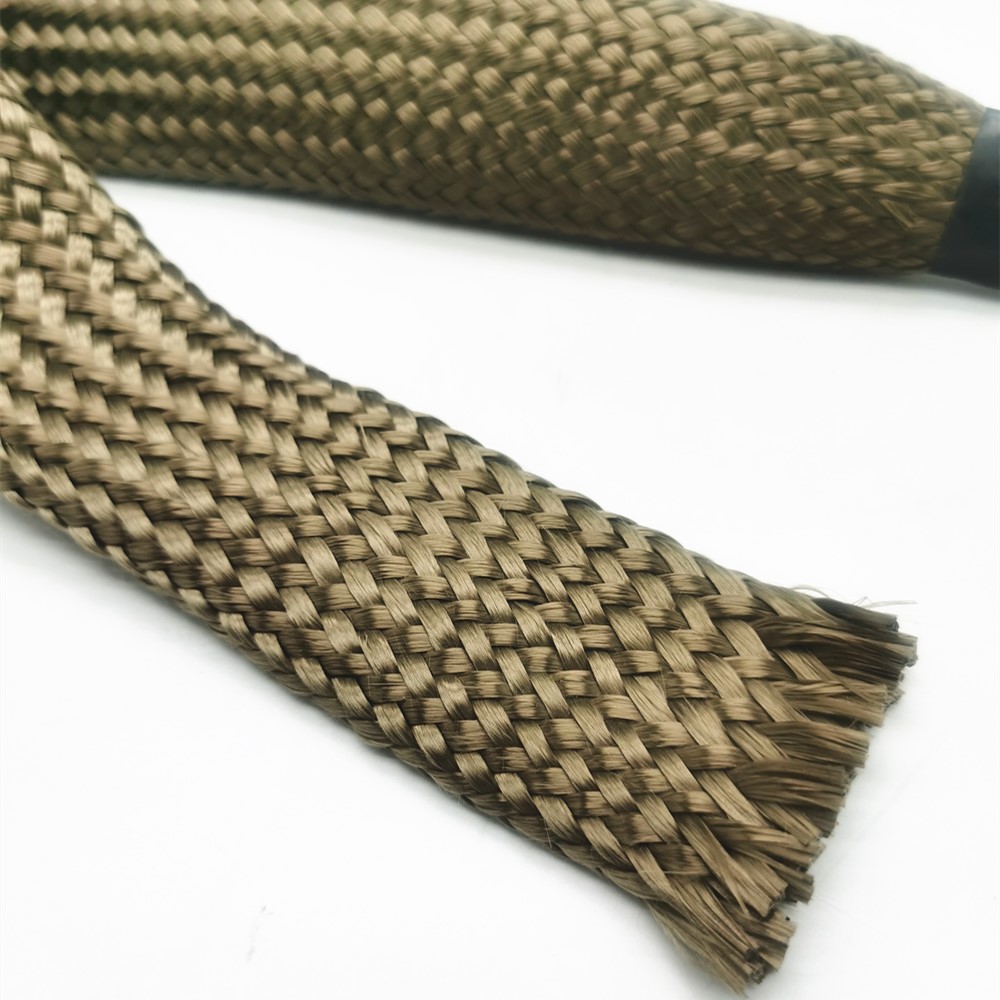čadičový rukáv je ochranný obal vyrobený z čadičového vlákna, ktoré sa vyrába z vulkanickej horniny procesom tavenia a vytláčania. Tieto vlákna sú potom tkané alebo spletené do rukávov, čím poskytujú pružný, trvanlivý a vysokým teplotám odolný materiál.
Aplikácia čadičových rukávov
-
Automobilový priemysel:
-
Výfukové systémy: Čadičové manžety sa používajú na zakrytie a izoláciu výfukových potrubí, potrubí a komponentov turbodúchadla na riadenie tepla a ochranu okolitých komponentov.
-
Ochrana vodičov: Môžu tiež chrániť elektrické vedenie a hadice pred teplom a oderom.
-
Letecký priemysel:
-
Tepelná izolácia: Používa sa v lietadlách a kozmických lodiach na ochranu komponentov pred extrémnymi teplotami a na zabezpečenie tepelnej izolácie.
-
Ochrana proti požiaru: Čadičové návleky pomáhajú chrániť citlivé komponenty pred nebezpečenstvom požiaru.
-
Priemyselné aplikácie:
-
Ochrana pred teplom: Čadičové manžety sa používajú na zakrytie rúr, hadíc a káblov v priemyselných prostrediach, aby boli chránené pred vysokými teplotami.
-
Oteruvzdornosť: Poskytujú vynikajúcu ochranu proti oderu, vďaka čomu sú vhodné do drsných priemyselných prostredí.
-
Námorný priemysel:
-
Odolnosť proti korózii: Čadičové manžety sa používajú v morskom prostredí kvôli ich odolnosti voči slanej vode a korózii.
-
Manažment tepla: Pomáhajú pri riadení tepla v lodných motoroch a výfukových systémoch.
-
Elektrika a elektronika:
-
Ochrana káblov: Čadičové manžety chránia káble a vodiče pred teplom a mechanickým poškodením.
-
Izolácia: Poskytujú vynikajúce elektrické izolačné vlastnosti.
-
Konštrukcia:
-
Ohňovzdornosť:Používa sa v stavebných materiáloch na zvýšenie požiarnej odolnosti.
-
Tepelná izolácia: Používa sa v stavebníctve na účely tepelnej izolácie.
-
Odolnosť voči vysokej teplote: Odolá teplotám až do 1000 °C (1832 °F).
-
Trvanlivosť: Vysoká odolnosť proti mechanickému opotrebovaniu.
-
Chemická odolnosť: Odolné voči väčšine chemikálií, vďaka čomu sú vhodné do drsného prostredia.
-
Šetrné k životnému prostrediu: Čadičové vlákna sú netoxické a majú nízky dopad na životné prostredie v porovnaní so syntetickými vláknami.

